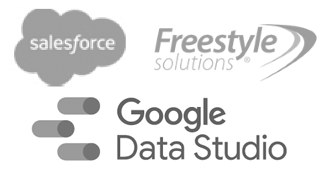While the axiom “all men are created equal” serves our country well, marketers know that not all customers are equal. R-F-M scoring of customers (Recency, Frequency, Monetary Value) offers a tried and true approach that marketing rookies – and veteran marketing analysts – have used for decades.
R-F-M is a straightforward metric that reflects, within your customer database, “What have you done for me lately?” Like grading students for reading, writing, and arithmetic in a classroom, R-F-M assigns three numeric scores to each customer in your database:
• Recency, as you might guess, is a measure of recent customer activity – usually from recent orders/invoices.
• Frequency is simply the count of those orders, over the lifetime of the customer.
• Monetary Value is the sum of the dollar value of those orders.
Why R-F-M?
In a word, “targeting.” R-F-M helps a marketer predict “likelihood to respond” for each customer on file. The higher the score, the more likely a customer will respond to your next marketing campaign.
Marketers often use an R-F-M score to target high yield customers, to predict response in direct mail campaigns, and to avoid those where printing and postage costs outweigh the anticipated return. The scoring is used by both small and large commercial marketers, as well as nonprofit organizations in fundraising efforts. In fact, my colleague David Raab recently shared that companies as large as Proctor & Gamble routinely employ R-F-M scoring.
Is R-F-M easy? No, but it is straightforward and accessible for entry level marketers with MS Excel skills. Unlike comparable statistical approaches, R-F-M uses simple algebra. The closest R-F-M gets to statistical terminology is deciles – meaning dividing your customer base evenly, top to bottom, into 10 equal segments.
Software for R-F-M
For moderate to large customer databases – greater than 25,000 customers – you should employ a relational database tool for navigating R-F-M. MS Access and MS FileMaker Pro are two popular choices. Our agency has used MS Access successfully for small-to-moderate installations and MS SQL for larger ones. We can help you establish the approach that best fits your own needs.
Going Deeper with R-F-M
In some cases, like B2B marketing, where a small improvement in predicting customer response can result in a huge increase in revenue return, you may want to go deeper with R-F-M scoring, and if so, statistics will enter the picture. For example, a B2B customer who had not ordered products for four years (thus a low R score) responded with a huge $100,000 order from a campaign. The basic R-F-M formula suddenly did not accurately reflect the customer’s value to us.
One of our staff worked some magic to solve this challenge by developing an RFM-Points™ system. RFM-Points addresses the issue raised by veteran marketers: “Which of the three variables is most valuable?” The answer is “it depends.” Conventional thinking says that Recency is more significant than Frequency, which in turn is more meaningful than Monetary Value. Our RFM-Points system establishes a single score, from 1 to 100, by statistically weighting each of the R-F-M components. This approach uses multiple regression analysis to calculate RFM-Points, based on compiling results from previous campaigns.
Try It!
Using R-F-M scoring does not guarantee success for your next marketing campaign. On the other hand, it will help you refine your marketing strategy, and it may also help you rank your customers to define the lower threshold of scores, below which reaching out to marginal customers is not worth your time and money.
And, if you want to jump-start R-F-M scoring for your business, contact the WiseGuys marketing staff at 703-941-8109 or check out our blog for more marketing tips.









